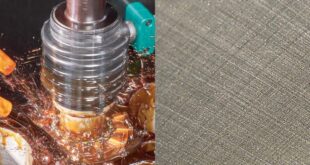Mark Lant explains what happens when you’re electrocuted and how that differs from an arc flash
Understanding the differences between electrocution and arc flash injuries is the first step in understanding why you need different protection from the two types of incident.
What happens when you’re electrocuted?
Electrocution can cause a wide range of injuries, as it blocks electrical signals between the brain and the rest of the body. From just creating a tingling in the part of the body where the electric current enters, to causing death, the spectrum of injuries is broad.
The Health and Safety Executive (HSE) says that a voltage as low as 50 volts which passes between two points in the body can cause any of the following symptoms:
- Electric shock – this can cause a person to stop breathing, muscle spasms (which can themselves cause bones to break), loss of muscle control meaning the operative can’t let go of what’s electrocuting them, and the heart to stop beating properly.
- Muscle, nerve and/or tissue damage
- Thermal burns at the source of the current
- Electrical burns caused by the current passing through the body, heating tissue as it goes. Electrical burns can be deep and often require major surgery. They can also be disabling.
What happens if you experience an arc flash?
There are big differences between arc flash and electrocution injuries. An arc flash incident throws both a huge amount of thermal energy out, as well as a strong blast that acts like an explosion.
Injuries can result from getting hit by the thermal energy or getting caught in the blast.
The energy in arc flash incidents can generate temperatures exceeding 35,000 Fahrenheit – hotter than the sun – and can affect people standing many metres away from the source. Arc flash injuries can include:
- Burns to the body, but also to the throat, mouth or lungs from inhaling metal vaporised by the heat. Burns to the body can be made worse by not wearing appropriate PPE as synthetic clothing can melt on to skin, even without outer workwear setting on fire
- Shrapnel injuries from flying debris
- Broken bones, concussion or muscle injuries from being thrown back by the blast or falling, if the operative is working at height
- Hearing loss or ruptured ear drums from the sound of the blast
- Flash burns to the eyes, caused by the UV light emitted by the flash of the incident
Preventing arc flash and electrocution injuries
Good risk assessments, safe working practices and general health and safety awareness are essential first steps in preventing both arc flash and electrocution injuries.
But as either kind of injury could be life-limiting or even life-ending, specialist personal protective equipment (PPE) is also needed, especially in the case of arc flash incidents.
It’s also of paramount importance that those in the field are aware of how to wear their PPE correctly – for example an unzipped jacket, won’t provide sufficient protection.
In short, the more knowledge workers have around the dangers of an arc flash, the less likely it is that an incident will have serious consequences.
Mark Lant is with ProGARM.
 Engineer News Network The ultimate online news and information resource for today’s engineer
Engineer News Network The ultimate online news and information resource for today’s engineer


